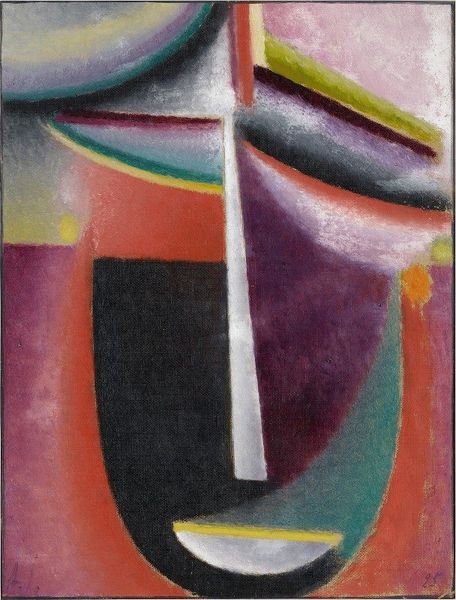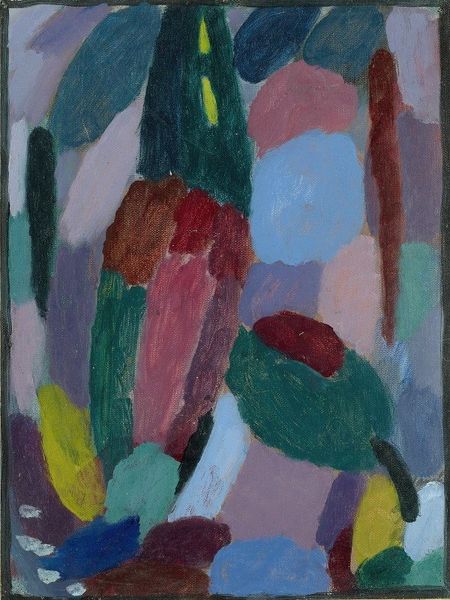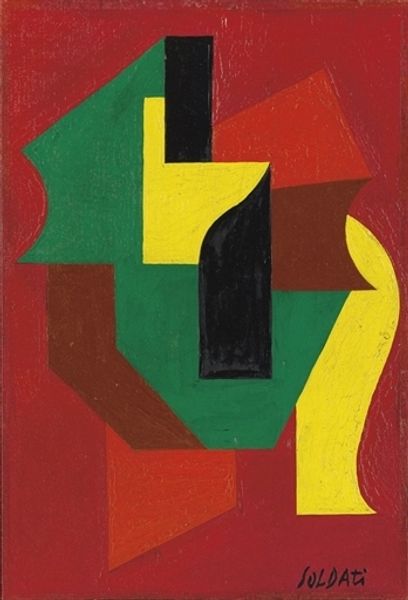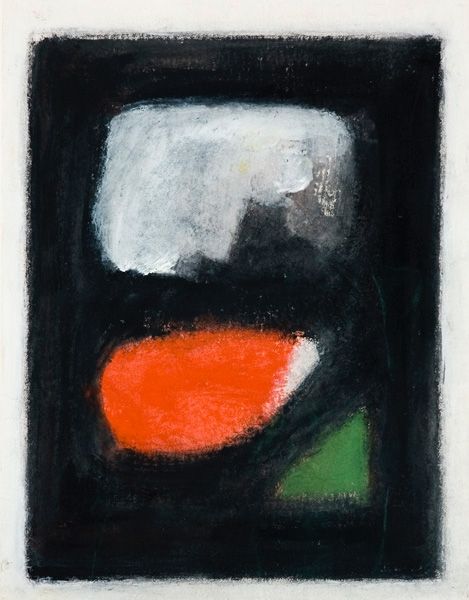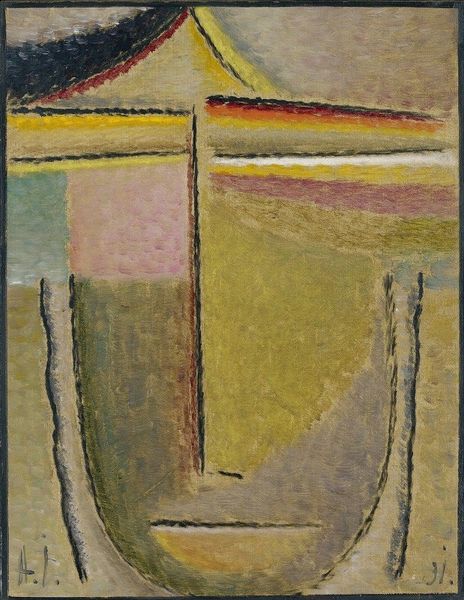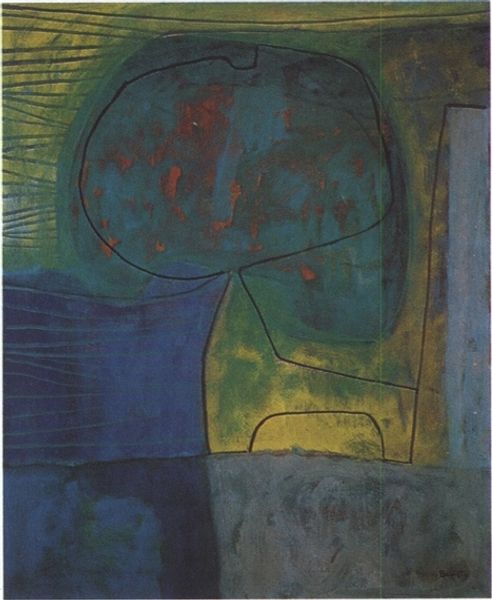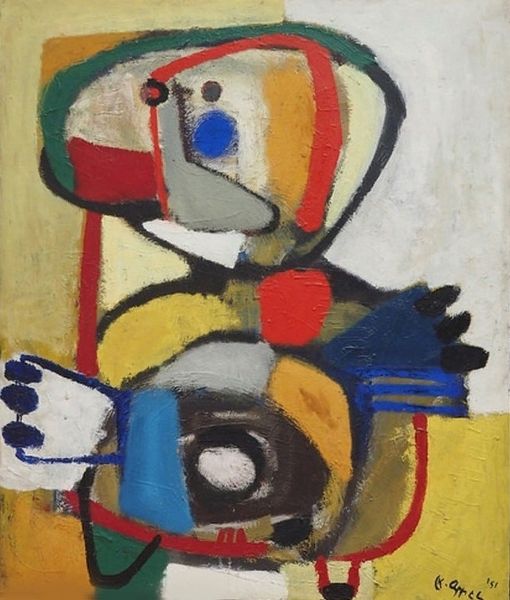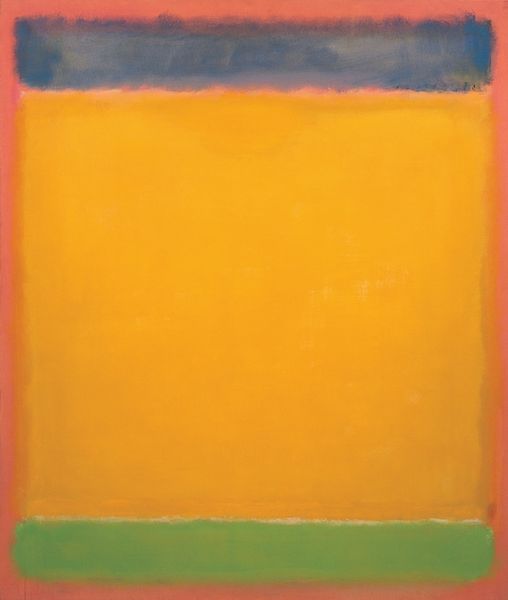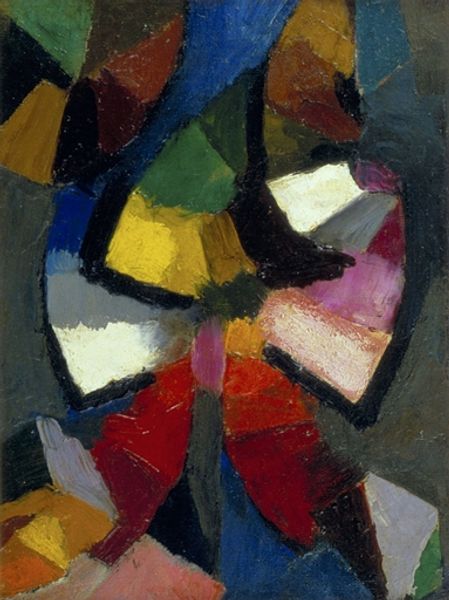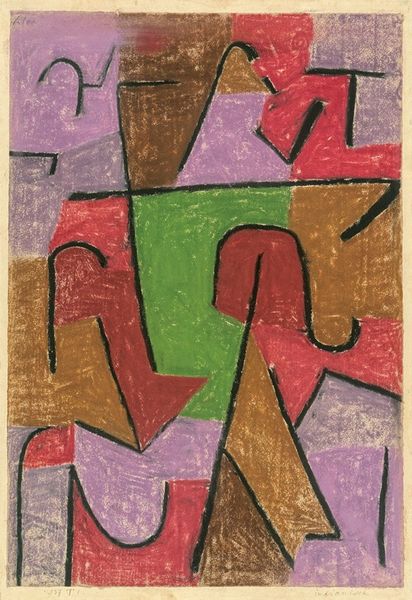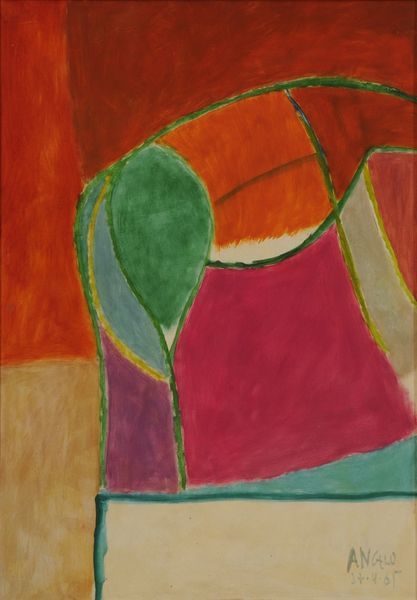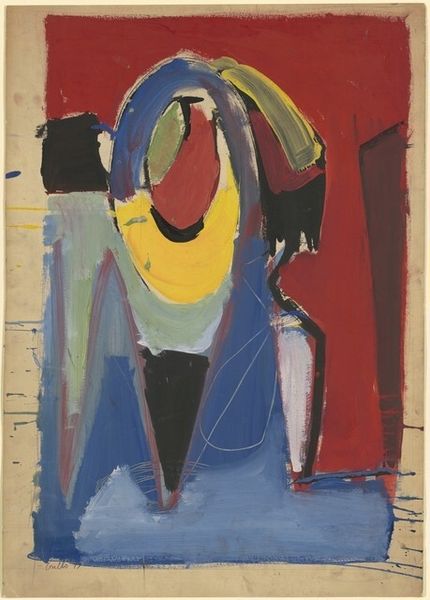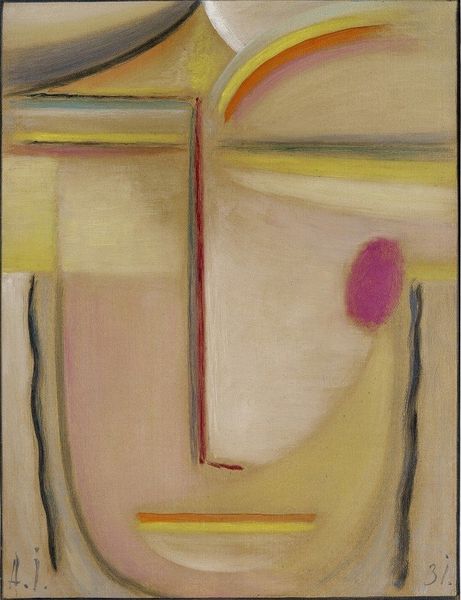
#
water colours
#
egg art
#
possibly oil pastel
#
handmade artwork painting
#
fluid art
#
acrylic on canvas
#
painting painterly
#
watercolour bleed
#
watercolour illustration
#
watercolor
Copyright: Public domain
Editor: So, this is Paul Klee’s "Evening Shows" from 1935. It's done in watercolour and possibly oil pastel. The figure seems almost like a painted mask, built from these rectangular blocks of color. What can you tell me about the making of it? Curator: What interests me most is how Klee builds the image through process. Consider the handmade nature evident in the watercolor bleed and the rough application of potentially oil pastel. This wasn't about illusionism, it was about construction, the labor of making something by hand. The texture alone begs the question: How does materiality affect our understanding of representation? Editor: I hadn't really considered the handmade aspect so much. The 'evening show' aspect suggests entertainment or even spectacle, but if the making of the art is part of the 'show' too, where does Klee situate the work in the landscape of art and craft at the time? Curator: Exactly. In 1935, these were increasingly policed categories, often tied to nationalist sentiments. How might the accessible materials Klee uses challenge those very rigid boundaries? Does his focus on the material indicate an embrace of artistic freedom, perhaps even an act of resistance against prevailing social norms, rather than fitting into any easily definable, prescribed mode of art? Editor: That gives me a whole new way of seeing the picture, as more than just a figure in a painting, but also as something commenting on its own construction and even society. Thanks for pointing that out! Curator: And thank you for making me reconsider this as not just process but potential social commentary; I hadn't seen it that way.
Comments
No comments
Be the first to comment and join the conversation on the ultimate creative platform.
